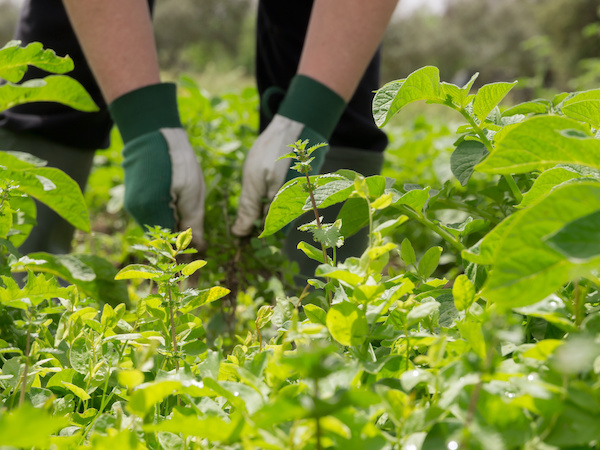
A few weeks ago, when it got to be 90 degrees, I decided to weed the garden. About two hours later, while I was in the shower, I felt weak and a bit woozy. I worried that something was wrong with me. When my head started to ache, I realized that there was something wrong. You damn fool, I said out loud. You’re dehydrated and it’s your own fault because you didn’t drink any water when you were out there weeding (and sweating) in the hot sun.
The heat is on its way back and so, I figured it might be a good time to refresh our memories on the basics of heat-related illnesses. Here’s a rundown of the most common ones, their symptoms, and what to do courtesy of the Maine CDC.
Heat-related illnesses
Heatstroke
- hot, dry, red skin (no sweating)
- rapid pulse
- high body temperature (≥ 105 F)
- headache
- loss of alertness
- confusion
- rapid and shallow breathing
- unconsciousness or coma
What to do: Call 911 immediately. Cool the person rapidly by moving them out of the sun and into a shady or cooler area; applying cool water or ice to the head, neck, armpits, and groin area; fanning; and loosening their clothing.
Heat exhaustion
- heavy sweating
- fainting
- vomiting
- cold, pale and clammy skin
- dizziness
- headache
- nausea
- weakness
What to do: Move the person to a cool place, have them drink fluids and rest, loosen their clothes, and cool them off with water or wet cloths. Heat exhaustion can quickly lead to heatstroke. If symptoms worsen or do not improve, get medical help.
Heat cramps
- Muscle cramps in the abdominal area or arms and legs that are often accompanied by heavy sweating and mild nausea.
What to do: Move the person to a cool place to rest and apply firm pressure to the cramping muscle. Gently stretch the cramped muscle, hold it for 20 seconds and then gently massage it. Have the person drink some cool beverages, such as water or a sports drink. Get medical help if there is no improvement or if the person has underlying medical problems.
Dehydration
- Dehydration is caused by excessive loss of water and salts from the body due to illness or from prolonged exposure to heat.
- Severe dehydration can easily become a life-threatening condition for infants and the elderly.
- Signs of dehydration include thirst, dry skin, fatigue, light-headedness, confusion, dry mouth, increased heart rate, increased breathing rate, and less frequent urination.
What to do: Move the person to a cool and dry place. Have the person lie down and rest, and drink water, juice, or sports drinks. Monitor the person – especially children and the elderly.
Sunburn
- Skin that is red, painful and warm after sun exposure.
What to do: Get medical help if the sunburn affects an infant or if there is fever, fluid-filled blisters or severe pain. Otherwise, apply cold compresses or immerse the burned skin in cool water, apply moisturizing lotion to the burn.
Heat rash
- A rash that looks like a red cluster of pimples or small blisters, usually in the neck and upper chest or in body creases. Most common in young children.
What to do: Move the person to a cooler place and keep the affected area dry. Use talcum powder to increase comfort.
Prevention tips
- Wear lightweight, loose-fitting clothing
- Avoid dark-colored clothing, because dark colors absorb the heat
- Drink lots of fluids — non-alcoholic
- Check your medications — some make you more sensitive to sun and heat
- Never leave a child, an elderly person, a pet, or any living creature in a parked car in hot weather. Ever.
- Avoid strenuous activity. If you can’t, try to do it in early morning or evening. Take breaks and drink plenty of fluids.
- Wear sunscreen
- Read and remember the signs I listed at the beginning of this post.
Don’t forget your pets

The ASPCA has several important tips on its website, including
- Give them plenty of fresh, clean water
- Bring indoors if extremely hot
- Never leave alone in a hot car
Something I didn’t know — “Animals with flat faces, like Pugs and Persian cats, are more susceptible to heat stroke since they cannot pant as effectively.”
Here are some heat-related symptoms the ASPCA says you should be on the lookout for:
- Excessive panting
- Difficulty breathing
- Increased heart and respiratory rate
- Drooling
- Mild weakness, stupor or even collapse
- Seizures
- Bloody diarrhea
- Vomiting
- Body temperature above 104°
Our summers are short here in Maine, so enjoy the sun and hot weather while they’re here, but be careful and take it easy. Another thing to watch out for is elevated ozone levels. When the weather is hot and steamy, ozone levels rise, which can cause breathing problems.
And please, don’t follow my bad example. Hydrate!

Great information Diane, and very timely. Sharing it with our Facebook fans!
Thanks Charity!
Hey Mom,
You forgot the sunscreen in your tips! 🙂 Great reminders! Thanks!
Oops! Thank you Jill. I’m going to add it right now.
[…] What You Need to Know About Heat Stroke (dianeatwood.com) […]
I did the same thing this week Diane. A couple down days followed!
Always love seeing Jackson.
Nice post. Thanks.